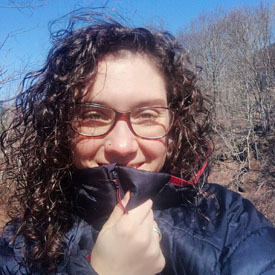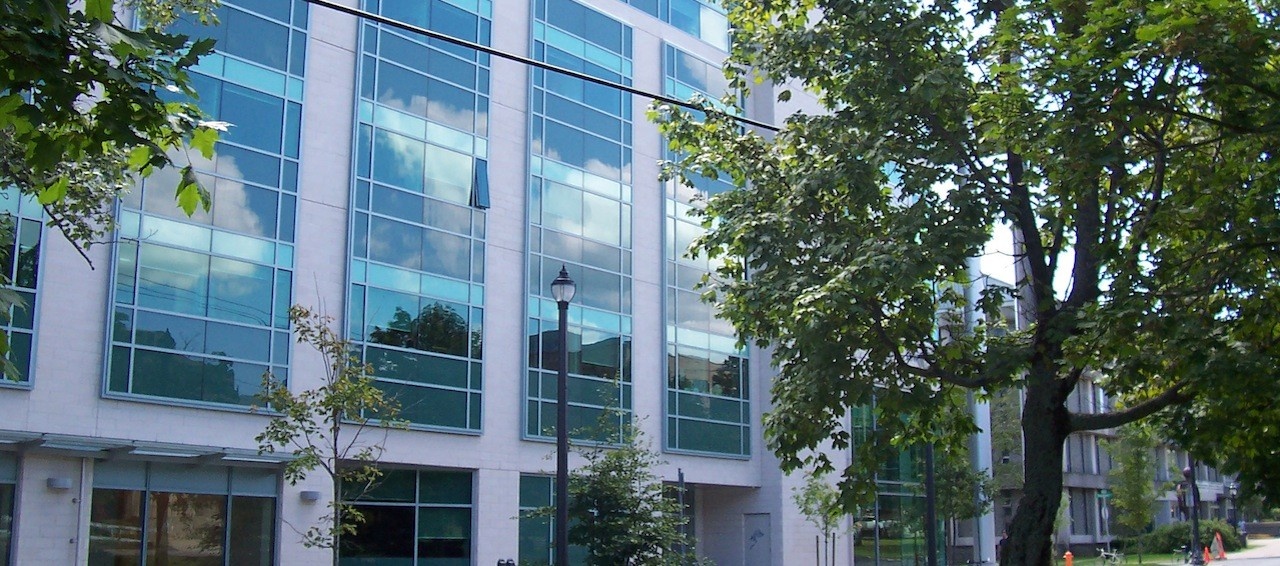Text-A-Tree researcher offers guidance
 Julietta Sorensen Kass photographed last summer in Halifax's Public Gardens. (Danny Abriel photo, other photos provided)
Julietta Sorensen Kass photographed last summer in Halifax's Public Gardens. (Danny Abriel photo, other photos provided)
Last spring, Julietta Sorensen Kass was busy planning a project that would see almost 3,000 visitors to the Halifax Public Gardens interacting with trees via text message.
This year, things are different. Parks across Nova Scotia, including the Public Gardens, are temporarily closed. But Julietta learned a lot about how trees can comfort and delight people in her Text-A-Tree research. Now, she’s encouraging people to connect with the nature in their neighbourhoods and outside their windows.
The results: Trees as friends and confidants
The project was part of her Master’s of Resource and Environmental Management (MREM) internship. Julietta worked with the Friends of the Public Gardens and a team of volunteers to place signs around the gardens, identifying trees with names and personalities who could be texted. The volunteers responded to over 10,000 text messages in the personas of the trees.
Julietta shared her findings in a 49-page report on the Text-A-Tree website in December 2019. Her aim had been to find out what people valued about urban forests. There is some evidence that urban forests will play a part in our adaptation to climate change, and she believes that understanding how the public interacts with trees in their cities will be key in gaining support for funding them.

Left: An American Elm. Right: Julietta looks up at Leaf Erikson (American Elm).
“I was looking for themes and broad categories,” she says. “Not just what people were saying, not just the keywords, but what are people doing when they send these messages? I found people who were expressing personal values, paying compliments, sharing personal moments and confiding in the trees.”
One of the most memorable exchanges was with a woman who texted a tree about something she hadn’t been able to say out loud: a recent miscarriage. “We didn’t expect that level of intimacy,” Julietta says. “The depth of emotion people brought was totally unanticipated. The relationship that people had with the tree is real even if the texting is part of a make-believe game.”
Julietta worked with her team of volunteers to develop their responses to these kinds of vulnerable messages. They decided to focus on bearing witness to what people said. “I’m here for you, you can tell me this, I won’t turn away,” was the message they wanted to send. “We were not there to fix it. When someone asked for advice specifically, we tried to answer from a tree’s perspective.”
The experience created a community of Text-A-Tree volunteers and enthusiasts, a feeling that Julietta wants to commemorate. She’s working on a behind-the-scenes book about the project, a keepsake for the Text-A-Tree community that will include a collection of favourite messages selected by Julietta and the volunteers, due to come out this summer.
Forest therapy: Being mindful with trees
Seeing how people responded to the project inspired Julietta to think of other situations where trees could help people voice their feelings. She explains that imagining an encounter that wouldn’t happen in real life is a common strategy in the emerging field of forest therapy. She’s particularly interested in the potential this method of healing could have in urban forests like Halifax’s. “What if we had a texting tree, monitored by a counsellor, at a hospital or in a schoolyard?” she asks.
 In early 2020, she spent a week in Los Angeles, at the start of a six-month practicum to become a forest therapy guide through the Association of Nature & Forest Therapy. Guides are trained to invite people to engage with trees in a sensory, mindful experience. When she returned to Nova Scotia, she started leading urban forest therapy walks as a guide-in-training, inviting participants to find pieces of colour in the grey winter landscape.
In early 2020, she spent a week in Los Angeles, at the start of a six-month practicum to become a forest therapy guide through the Association of Nature & Forest Therapy. Guides are trained to invite people to engage with trees in a sensory, mindful experience. When she returned to Nova Scotia, she started leading urban forest therapy walks as a guide-in-training, inviting participants to find pieces of colour in the grey winter landscape.
Her walks are on hold while Nova Scotians avoid gathering in groups to help curb the spread of coronavirus, so Julietta is looking to connect with her community in other ways. “I am holding on to my nature connection with everything I have right now,” she says. She hopes to help others do the same, even when it looks different than what we’re used to.
Reframing: Nature through your window
On the Text-A-Tree Instagram account, Julietta offers gentle words for those grieving the temporary closure of Nova Scotia’s parks and struggling with reduced time outdoors. “Times like this are when the practice of urban forest therapy becomes a lifeline,” she says. “It turns out our city is loaded with little gems of spots where we can walk, sit, explore and breathe.”
Julietta is sharing pictures of overlooked beauty on Instagram with the hashtag #myoutdoorhfx, to “remind folks that you can find nature right in your own neighbourhood.” She’s encouraging other people to find their own and post photos to “share your outdoor joy” with people who can’t go outside.
“Maybe what we need most in our lives is to learn how to reframe,” she says in a post accompanied by a photo of the Northwest Arm seen through the bare branches of a tree. “This experience is forcing us to build our own mosaics of special spaces.” Even if you’re not somewhere with a lot of trees, you might be able to notice birds, sunshine, the wind.
What advice could our friends from the Text-A-Tree project offer us right now? Julietta imagines that Miss Luna Ruby, a Weeping European Beech in the northeast corner of the Public Gardens would be sorry to hear that people are struggling and ask us to remember our roots (with apologies for the pun). "We humans tend to be very preoccupied with superficial living—constantly concerned with what's above ground,” she says. “But the things that nourish us, help us to grow and give us meaning— those are still with us.”
“I think she'd say to take this time to get to know the tree out your window, in your back yard or in front of your apartment. They've all got stories, even if they can't text them to you.”
Recent News
- Finding his place: Juan Chavez Cabrera
- How Covid has Made the Fight Against Plastic Pollution Even Tougher
- Wandering Through Ancient Woods with Peter Duinker
- Q and A with new faculty member Stanley Asah
- First assessment of its kind shows environmental impact of the full range of aquatic foods to help guide more sustainable production and diets
- Brenda Smart Recognized for Student Service with Rosemary Gill Award
- SRES Change Makers: Anastasia Papadopoulos, Master of Environmental Studies
- Melanie Zurba, SRES' New Graduate Coordinator
